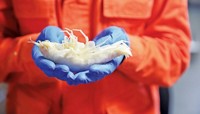Advertisement
Grab your lab coat. Let's get started
Welcome!
Welcome!
Create an account below to get 6 C&EN articles per month, receive newsletters and more - all free.
It seems this is your first time logging in online. Please enter the following information to continue.
As an ACS member you automatically get access to this site. All we need is few more details to create your reading experience.
Not you? Sign in with a different account.
Not you? Sign in with a different account.
ERROR 1
ERROR 1
ERROR 2
ERROR 2
ERROR 2
ERROR 2
ERROR 2
Password and Confirm password must match.
If you have an ACS member number, please enter it here so we can link this account to your membership. (optional)
ERROR 2
ACS values your privacy. By submitting your information, you are gaining access to C&EN and subscribing to our weekly newsletter. We use the information you provide to make your reading experience better, and we will never sell your data to third party members.
Environment
Beijing Sends Nitrogen Downstream
Water Pollution: Researchers quantify the impact of contaminants on the dry region’s rivers
by Naomi Lubick
March 8, 2012

China’s Haihe River basin drains an arid region that is home to some 28 million people, including the inhabitants of Beijing. The water travels through agricultural lands and urban areas to the East China Sea. With it comes a massive load of nutrients, including nitrogen, which causes algal blooms and oxygen levels low enough to kill fish. Now researchers put the first numbers on the concentrations of nitrogen across the basin and find that they are two to three times as high as the peak concentrations in Europe and the U.S., which occurred decades ago (Environ. Sci. Technol., DOI: 10.1021/es3004415).
Because this part of China gets little rain, its rivers consist almost entirely of treated wastewater. Michael Berg of the Swiss Federal Institute of Aquatic Science and Technology and colleagues there and at the Chinese Academy of Science spent a year collecting samples and tracking contaminants at 16 sites along rivers and canals in the basin. The team calculates that the Haihe basin’s per capita mass of nitrogen is comparable to what flowed down the Mississippi and Rhine Rivers in the 1960s and 1970s, before pollution controls such as the Clean Water Act took effect. But because the region’s river flows are so low, its nitrogen concentrations are two to three times as high.
Even though Beijing added new water treatment plants to its network before the 2008 Olympics, they cannot handle all of the city’s waste, the authors say. They recommend upgrading existing water treatment plants and building more to limit the pollution of local waters.




Join the conversation
Contact the reporter
Submit a Letter to the Editor for publication
Engage with us on Twitter